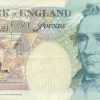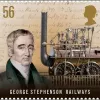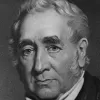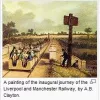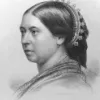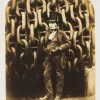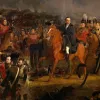Important update from TheSchoolRun
For the past 13 years, TheSchoolRun has been run by a small team of mums working from home, dedicated to providing quality educational resources to primary school parents. Unfortunately, rising supplier costs and falling revenue have made it impossible for us to continue operating, and we’ve had to make the difficult decision to close. The good news: We’ve arranged for another educational provider to take over many of our resources. These will be hosted on a new portal, where the content will be updated and expanded to support your child’s learning.
What this means for subscribers:
- Your subscription is still active, and for now, you can keep using the website as normal — just log in with your usual details to access all our articles and resources*.
- In a few months, all resources will move to the new portal. You’ll continue to have access there until your subscription ends. We’ll send you full details nearer the time.
- As a thank you for your support, we’ll also be sending you 16 primary school eBooks (worth £108.84) to download and keep.
A few changes to be aware of:
- The Learning Journey weekly email has ended, but your child’s plan will still be updated on your dashboard each Monday. Just log in to see the recommended worksheets.
- The 11+ weekly emails have now ended. We sent you all the remaining emails in the series at the end of March — please check your inbox (and spam folder) if you haven’t seen them. You can also follow the full programme here: 11+ Learning Journey.
If you have any questions, please contact us at [email protected]. Thank you for being part of our journey it’s been a privilege to support your family’s learning.
*If you need to reset your password, it will still work as usual. Please check your spam folder if the reset email doesn’t appear in your inbox.
George Stephenson and the development of the railway
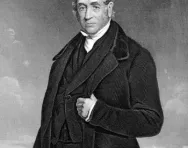
Why is George Stephenson famous?
George Stephenson was a self-taught English civil and mechanical engineer sometimes called the "Father of Railways".
He developed the ‘Rocket’, an early locomotive, with his son Robert and pioneered rail transport and the development of the first passenger railways.
Most of the world's railways run on the standard rail gauge (a fixed spacing between railway tracks), sometimes called 'Stephenson gauge', which he established.
Top 10 facts
- Stephenson was one of six children born into a poor mining family in Wylam, Northumberland on 9 June 1781.
- His father, Robert, worked on the engines that were used to pump water from the mines and the young George Stephenson longed to be in charge of these steam-driven engines.
- As a young boy he had a number of jobs before going down the pit to mine coal at the age of ten. At 14 he became an assistant fireman and later worked on the winding machine which pulled the cages of miners up from the pit face.
- George did to know how to read or write until he was 18. He went to night school and taught himself over a three-year period. He wanted to learn as much as possible about engines.
- After George’s wife died, leaving him with a young son, Robert, George decided to go to Scotland and study engines. Later Robert helped his father on many projects and became a famous engineer and bridge builder in his own right.
- In 1811 George fixed the broken pump engine at a local flooded mine and impressed the owners. This led to him being promoted and acknowledged as a local expert on engines.
- He persuaded local backers to support his plan for a locomotive engine. In 1814 he built ‘Blucher’, his first locomotive, which travelled at 4mph whilst pulling a load of 30 tons.
- in 1823 Stephenson opened a locomotive factory in Newcastle. Two years later the first journey of his ‘Locomotion No 1’ with its carriage ‘Experiment' took place. The ‘Locomotion’ cost £500 to build, could carry 450 passengers and travel at 15mph.
- In 1828 the Railway Board announced a competition to determine which was the best engine. Stephenson’s ‘Rocket’ beat four other entrants on the grounds of weight, speed, power and reliability. The ‘Rocket’ successfully completed ten laps of the track at Rainhill achieving the dazzling speed of 29 mph on the final lap.
- The Stockton to Darlington line was the world's first passenger railway. The Manchester Liverpool Railway was opened in 1830 and in 1838 the line from Birmingham to London was completed.
Timeline
- 9 June 1781George Stephenson is born in Northumberland
- c1791Stephenson starts work at the mine
- c1795He becomes an assistant fireman
- 1802Stephenson marries Frances Henderson
- 1803Robert Stephenson is born
- 1814Stephenson builds his first locomotive, ‘Blucher'
- 1815Stephenson invents a mining lamp

- 1819First Railway at Hetton Colliery
- 1823Stephenson opens his locomotive factory in Newcastle
- 27th September 1825First journey of Locomotion No1 on the Stockton to Darlington line
- 1829The Rainhill trials; ‘Rocket’ proves its superiority over other engines
- 15 September 1830The Manchester to Liverpool Railway opens; William Huskisson MP run over and killed by Rocket
- 1838London to Birmingham Railway completed
- 12 August 1848Death of George Stephenson



Boost Your Child's Learning Today!
- Start your child on a tailored learning programme
- Get weekly English & maths resources sent direct to your inbox
- Keep your child's learning on track
Did you know?
- The first man to be killed on the railways was a member of parliament, William Huskisson. He was knocked down by the Rocket at the opening of the Manchester to Liverpool Railway in 1830.
- Stephenson’s early locomotives had no brakes and had to be stopped by reversing the valve gear while the engine moved forward. This effectively applied a steam brake as the steam acts against the forward motion of the engine, stopping it.
- In 1825 40,000 people came to watch the first journey of ‘Locomotion No 1’.
- Local miners preferred Stephenson’s mining lamp to that of Sir Humphrey Davy. They called the lamp ‘The Geordie’, after its inventor – a term used today to describe people who come from the North East. Sir Davy believed, wrongly, that Stephenson had stolen his idea and there was much bitter feeling between the two.
- Robert Stephenson became almost as famous as his father. He became a Member of Parliament and was buried in Westminster Abbey.
- The standard gauge (4 feet, 8 1/2 inches) for railway tracks that Stephenson invented is still used all around the world.
Look through the gallery and see if you can spot the following:
- An illustration of the Rocket
- The cottage where George Stephenson was born
- George Stephenson on a £5 Note
- George Stephenson on a stamp
- George Stephenson as an older man
- A photo of the Rocket (Credit: Tony Hisgett)
- A painting of the opening of the first railway
- Why not print out the Rocket and colour it yellow?
Gallery
About
A self-taught man from a poor background, George Stephenson combined his thirst for knowledge with a strong sense of self- belief and patience in the face of criticism. Some people looked down on Stephenson because of his humble birth, but many more admired him for the obstacles he had overcome.
Stephenson was not the first man to invent a locomotive. In 1801 Richard Trevithick had invented a steam locomotive that ran on the roads, but his attempts to produce rail locomotives foundered due to the difficulty of producing rails strong enough for the heavy engine to run on.
Through careful observation and experiment Stephenson was able to develop the ideas of Trevithick and other pioneers. Stephenson had a creative and enquiring mind, inventing a mining lamp, a means of increasing the productivity of chickens and a frame for growing straight cucumbers! He also worked on the development of railway tracks and bridge building.
Stephenson's Rocket (known as ‘Travelling Engine No.19’ while it was being built!) is one of the best-known locomotives in the history of railways but it was not designed by George Stephenson but by his son Robert Stephenson. George and his son collaborated on the project, however, and when the Liverpool and Manchester Railway announced a competition to find the best locomotive design for their railway at Rainhill, near Liverpool, the Rocket, built by Robert Stephenson and Company, was entered and won the trial.
Many people feared that the speed and vibration of rail travel would prove to be bad for people's health and perhaps even be fatal. Others worried that by enabling poor people to move around the country the new railways could be a threat to law and order. Stephenson won over many objectors by persuading them that the railways would make money for them!
Although the Industrial Revolution was underway by the time of Stephenson’s birth his inventions accelerated the pace of change and altered the face of the landscape forever. Coal and engines powered the mills and Stephenson’s railways enabled the transport of goods and material cheaply over long distances at speeds far faster than had previously been possible. Britain became very prosperous as a result of these developments.
The railways changed the lives of ordinary people, making it possible to travel long distances (to the countryside, to the seaside and to the big cities) relatively swiftly and at low cost.
Famous friends
Robert Stephenson (1803-1859) – George Stephenson’s son, also an engineer, he worked alongside his father and was instrumental in the development of the Rocket. He went on to become a famous bridge builder and later a Member of Parliament.
William Huskisson (1770-1830) – MP for Liverpool. He was killed by the Rocket at the opening of the Manchester to Liverpool Railway becoming the first ever casualty of the railways.
Duke of Wellington (1769-1852) – the hero of Waterloo and English Prime Minister from 1828-1830. He was a bit doubtful about the railways at first but was won over when he learned that they could make money. He attended the opening of the Manchester to Liverpool Railway. Witnessing the death of Huskisson put him off railway travel for life!
Related Videos
Just for fun...
- Play a board game called Stephenson’s Rocket
- Test your knowledge of George Stephenson
- Travel back to the 19th century to meet the Stephensons and find out about the coming of the railways in a BBC Schools Radio programme
- Print out and colour in a picture of the Rocket
- Quiz yourself on the history of trains!
- Make a tiny plastic replica of the Rocket
Best children's books about George Stephenson, the Rocket and railways history
Find out more
- Find out more about the very first trains
- Listen to BBC Schools Radio information about the invention of the train and the expansion of the Victorian rail network
- How did Rocket get its name? Find out!
- Read some primary sources to find out more about Rocket's history
- How does a steam engine work?
- Find out more about how the railways changed Victorian Britain
- Watch a video about the scientific achievements of Thomas Newcomen and James Watt, who first transferred heat energy into useable power using steam engines
- An expert explains the engineering excellence that set Rocket apart from its rivals
- Find out more about Stephenson's Safety Lamp and how it kept miners safe in the 19th century
- Discover why Stephenson’s groundbreaking steam locomotive was a huge step forward in the history of transport
- Read 13 facts about Stephenson's Rocket
- See some of the merchandise produced to commemorate Rocket's triumph at the Rainhill Trials
- Children's information about steam locomotives and the history of transport
See for yourself
- Explore a 3D model of Rocket online
- Stephenson's Rocket at the Science Museum in London
- The National Railway Museum at York
- The Stephenson Railway Museum is in North Shields
- Visit the cottage where George Stephenson was born in Wylam Northumberland
- A detailed model of Stephenson’s groundbreaking steam locomotive is on display at the National Museum of Scotland


